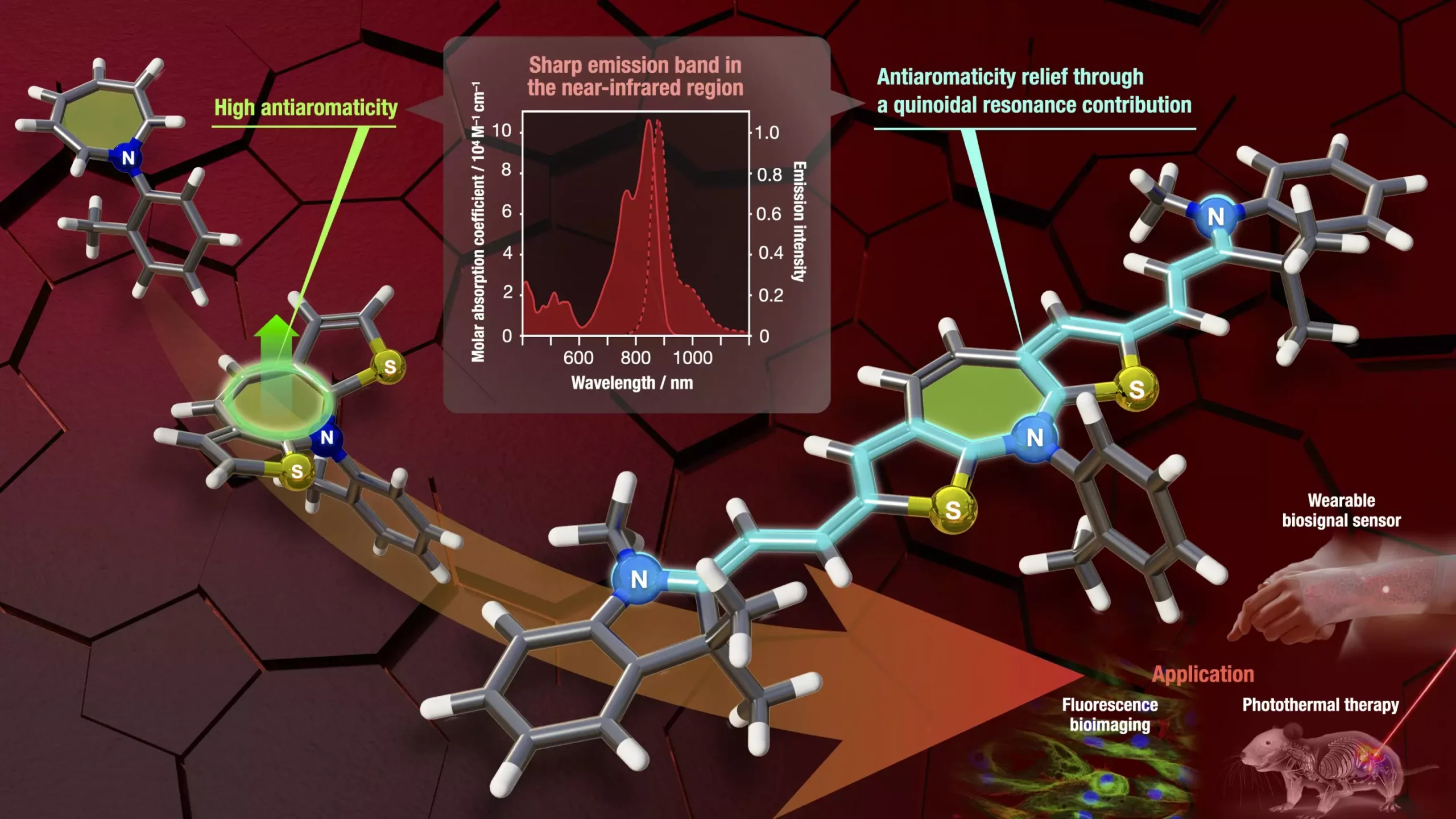The recent development and discovery of antiaromatic molecules that exhibit absorption and fluorescence bands in the near-infrared (NIR) region have sparked excitement among researchers in the field of health care, optoelectronics, and materials science. Led by Associate Professor Masahito Murai and Professor Shigehiro Yamaguchi, a research group from the Graduate School of Science and the Functional Organic Materials Laboratory at Nagoya University has made significant advancements in this area. Their groundbreaking findings, published in Angewandte Chemie International Edition, highlight the potential applications of these molecules in various fields, including medical devices.
Spectroscopy, the study of the interaction between light and matter, focuses on absorption and fluorescence as fundamental research subjects. An absorption band refers to the range of wavelengths in which a material absorbs light, causing a transition of electrons to higher energy states within the molecules or atoms. Fluorescence bands, on the other hand, relate to the emission of light by a substance after it has absorbed light, with the emitted light having a longer wavelength than the absorbed light.
The significance of the research conducted by the Nagoya University team lies in their development of organic molecules that emit light in the near-infrared (NIR) region, specifically within the wavelengths of 800 to 1100 nm. This region, often referred to as the “optical window of living tissue,” holds immense potential for medical applications such as deep biological imaging, photodynamic therapy, and photothermal therapy. NIR light possesses the advantage of being able to penetrate tissues more deeply with reduced scattering and minimal photodamage, making it an invaluable tool in healthcare and life science research.
Despite the demand for organic molecules exhibiting absorption and emission properties in the NIR region, their development has been hindered by various challenges. Conventional dyes often suffer from reduced solubility and increased lipophilicity due to the strong interactions between their large extended π-electron systems. This limits their ability to be molded and processed as electronic materials and applied to the field of biological imaging.
The breakthrough achieved by the Nagoya University research group lies in the fusion of thiophene, a less aromatic heterocyclic ring, with azepine. By combining these two elements, the team effectively balanced antiaromatic and polymethine characters, increasing the likelihood of electronic transitions of antiaromatic compounds and enabling absorption and fluorescence wavelengths in the NIR region. This fusion opens up new possibilities for the development of diverse NIR luminescent materials.
To demonstrate the efficacy of their approach, the research group designed and synthesized a series of azepine derivatives with electron-accepting groups. Single-crystal X-ray structure analysis revealed significant structural differences between the derivatives. The curved dibenzoazepine displayed absorption and fluorescence at shorter wavelengths, while the highly planar dithienoazepine analog exhibited absorption and fluorescence at wavelengths longer than 700 nm. The team further showcased the utility of the molecular framework by synthesizing a dithienoazepine with cationic indolium groups, which displayed a strong absorption band at 846 nm and a narrow fluorescence band at 878 nm.
The research conducted by the Nagoya University team introduces a promising avenue for the development of materials with strong absorption and fluorescence properties in the NIR range. The dithienoazepine core, despite its small tricyclic skeleton, proved to be a useful tool for achieving long-wavelength absorption and emission. The potential applications of these near-infrared emitting molecules span a wide array of fields, including fluorescence imaging, sensing, and materials science. With a particular focus on deep-tissue imaging and non-invasive diagnostics, this breakthrough showcases Nagoya University’s commitment to pushing the boundaries of science and innovation to improve healthcare using cutting-edge technology.
The development of antiaromatic molecules capable of emitting light in the NIR region holds immense promise for the advancement of medical devices and other fields. The fusion of thiophene and azepine, along with careful molecular design and structural analysis, has paved the way for a new generation of NIR luminescent materials. It is an exciting time for researchers and scientists alike as they continue to explore the potential applications and implications of this groundbreaking discovery.


Leave a Reply